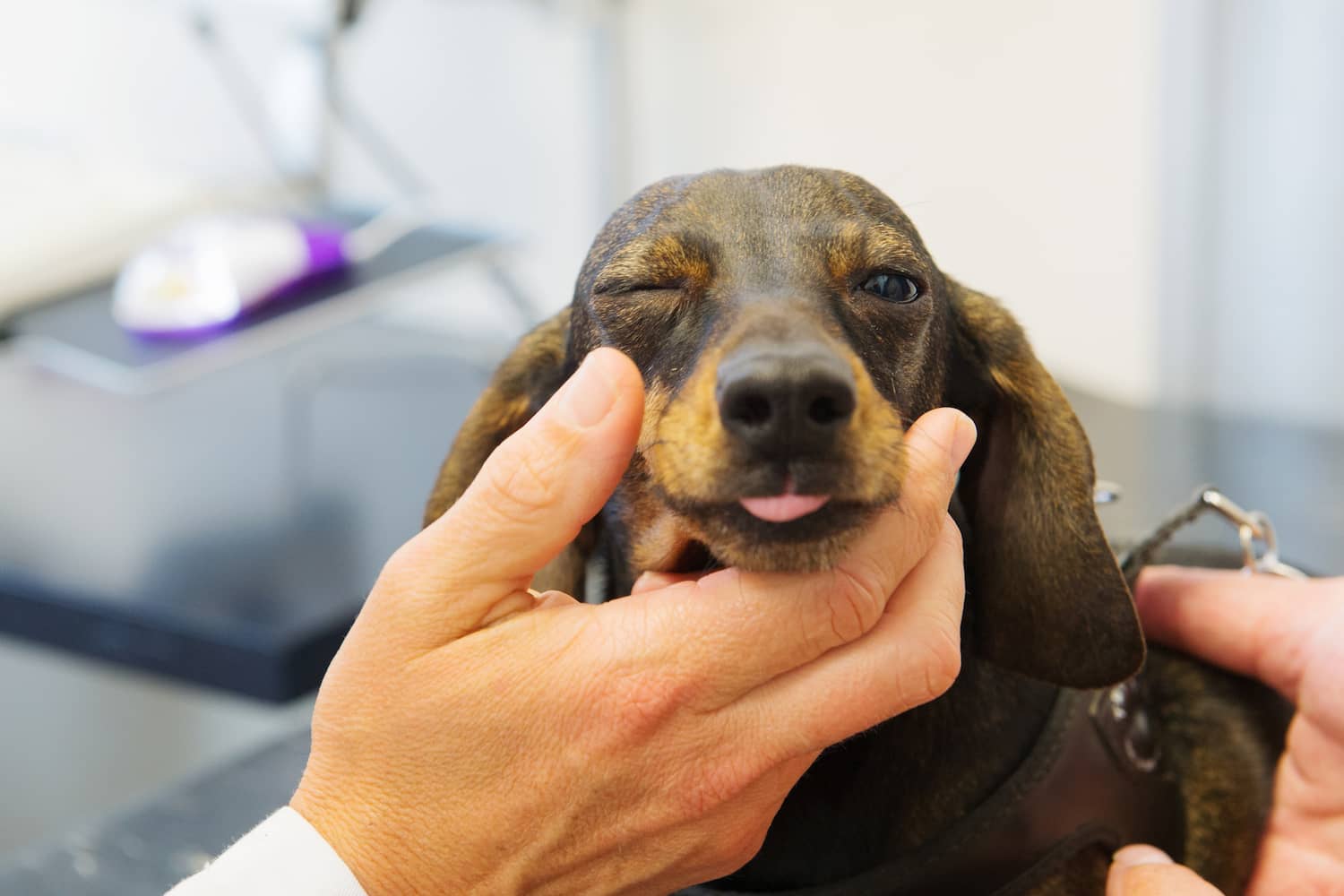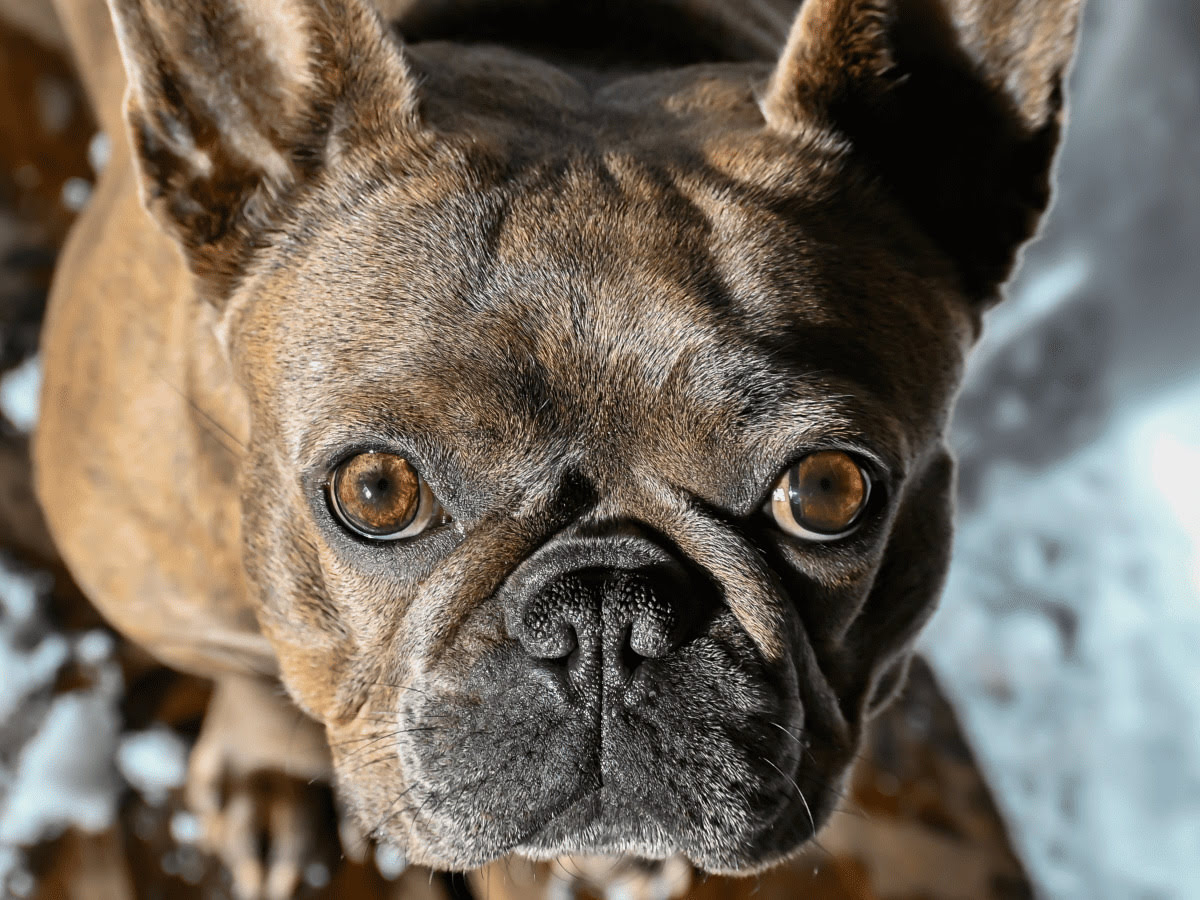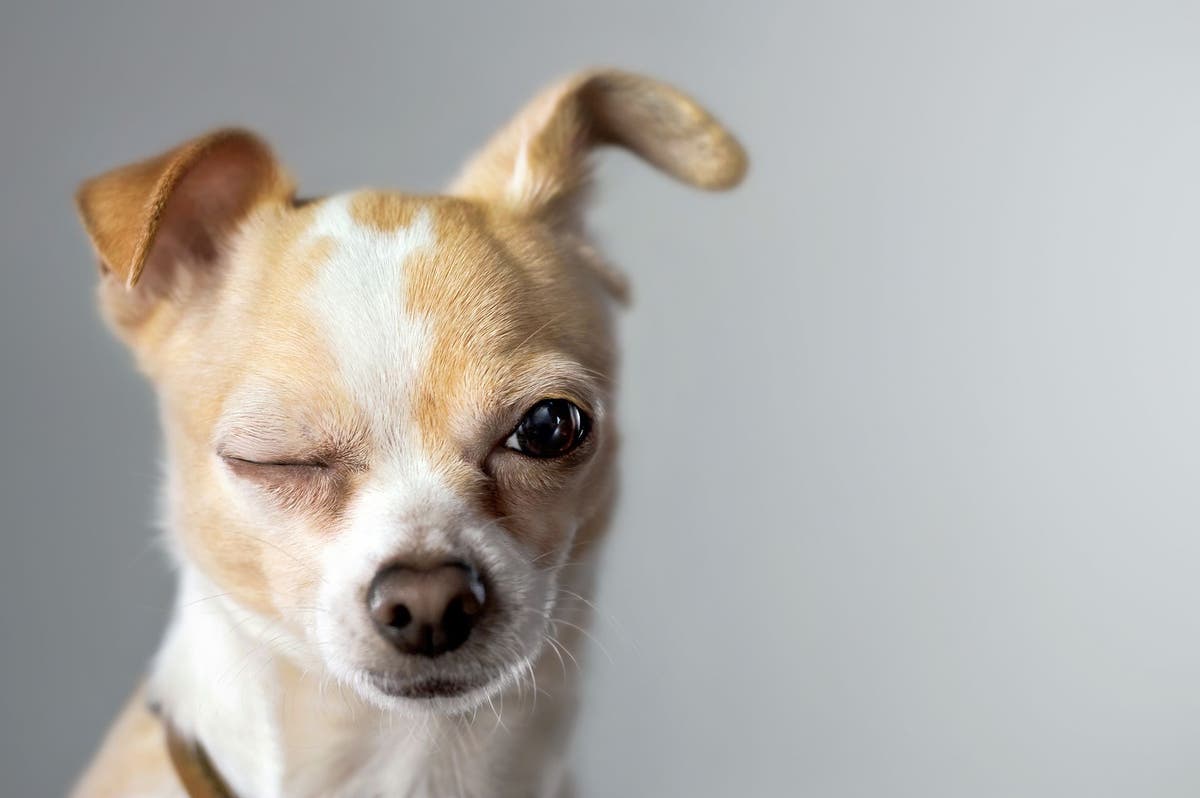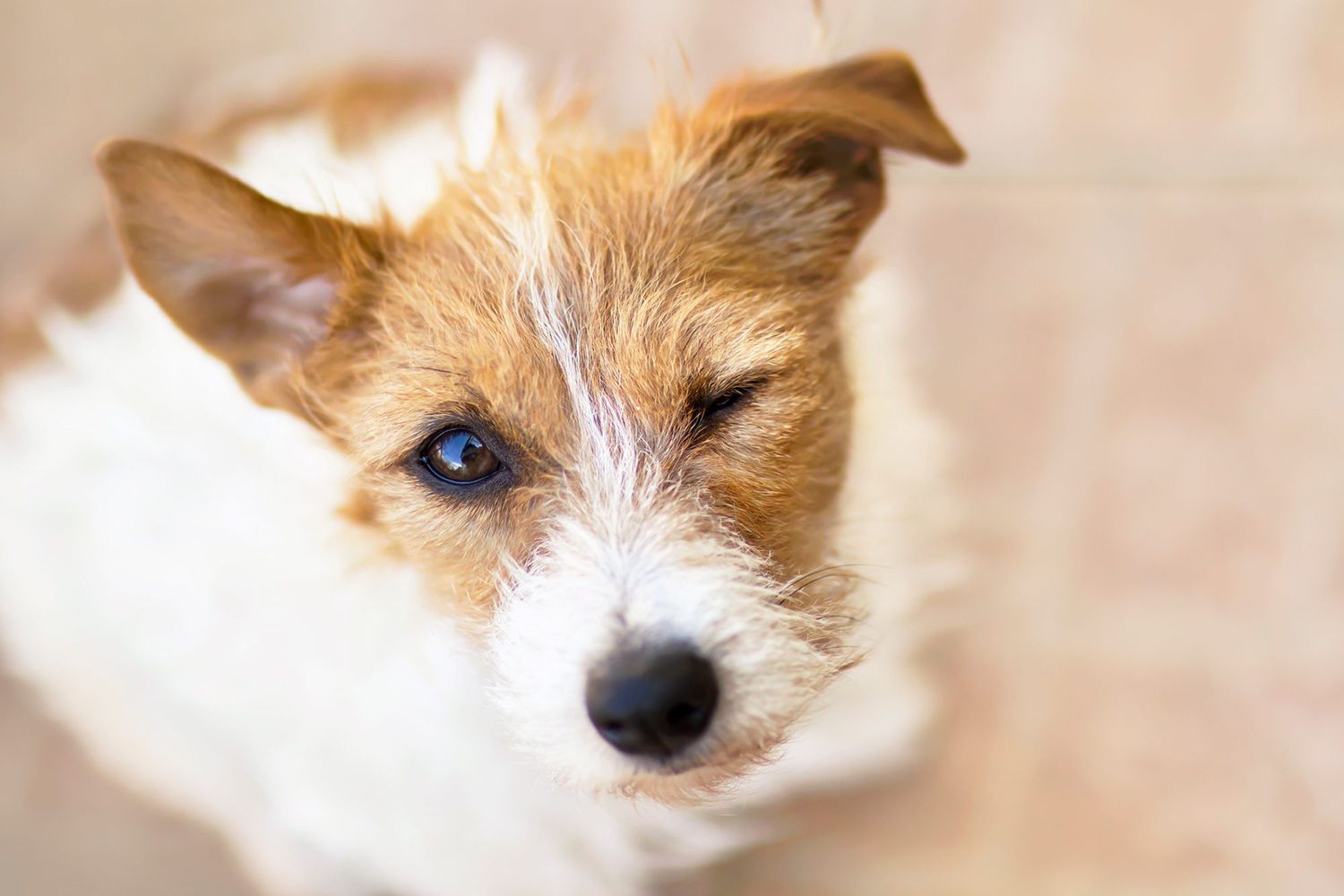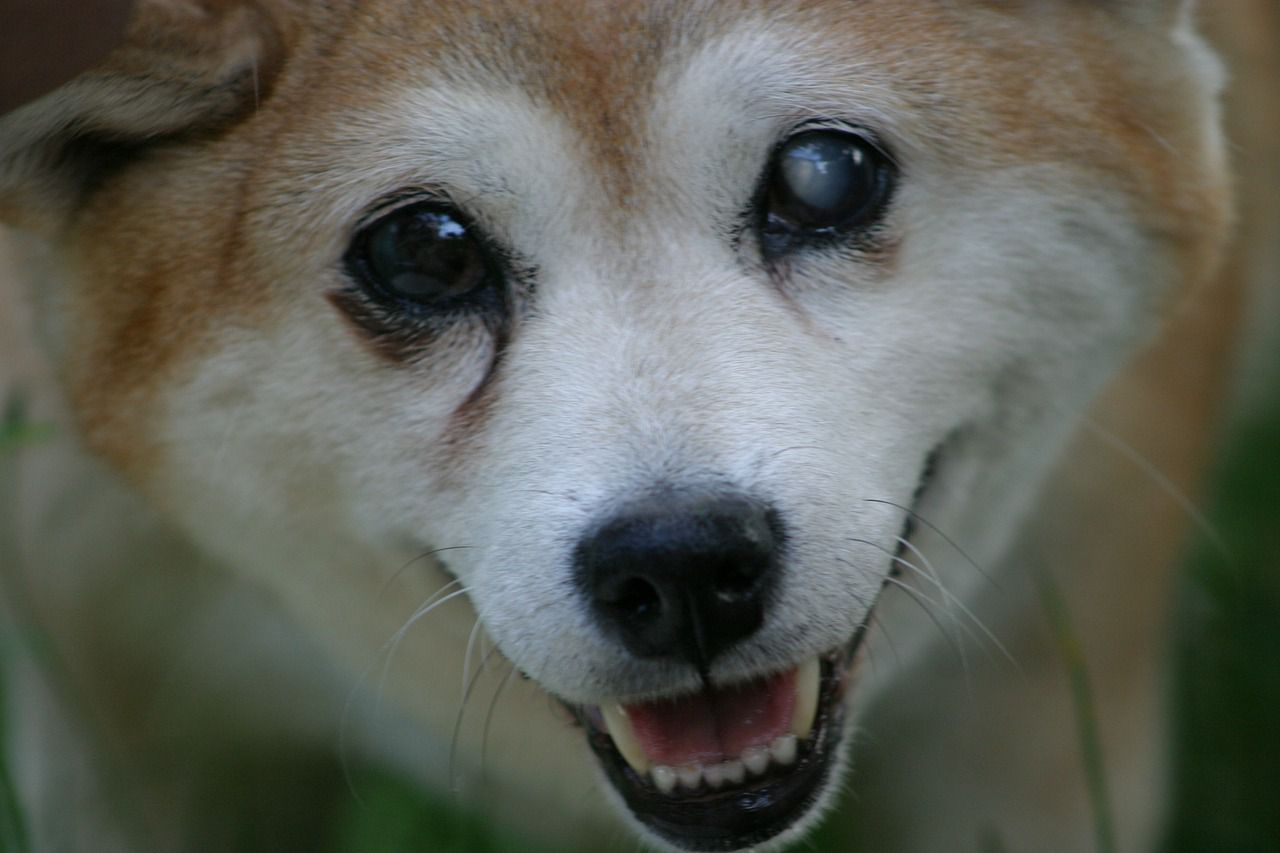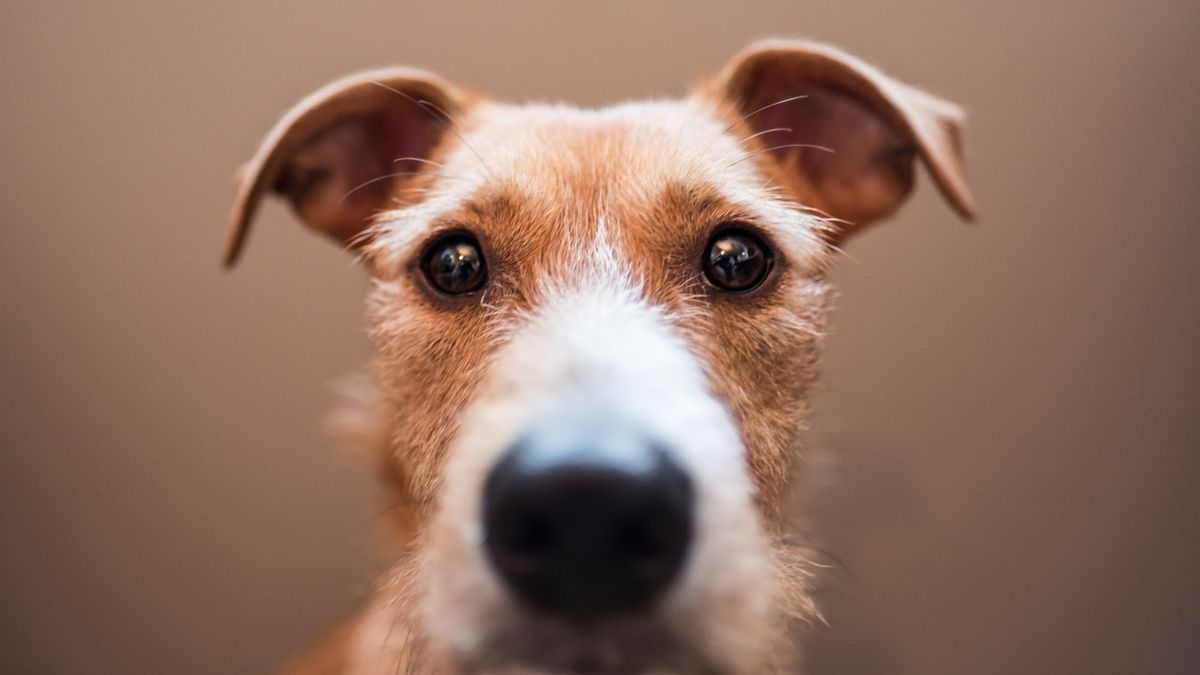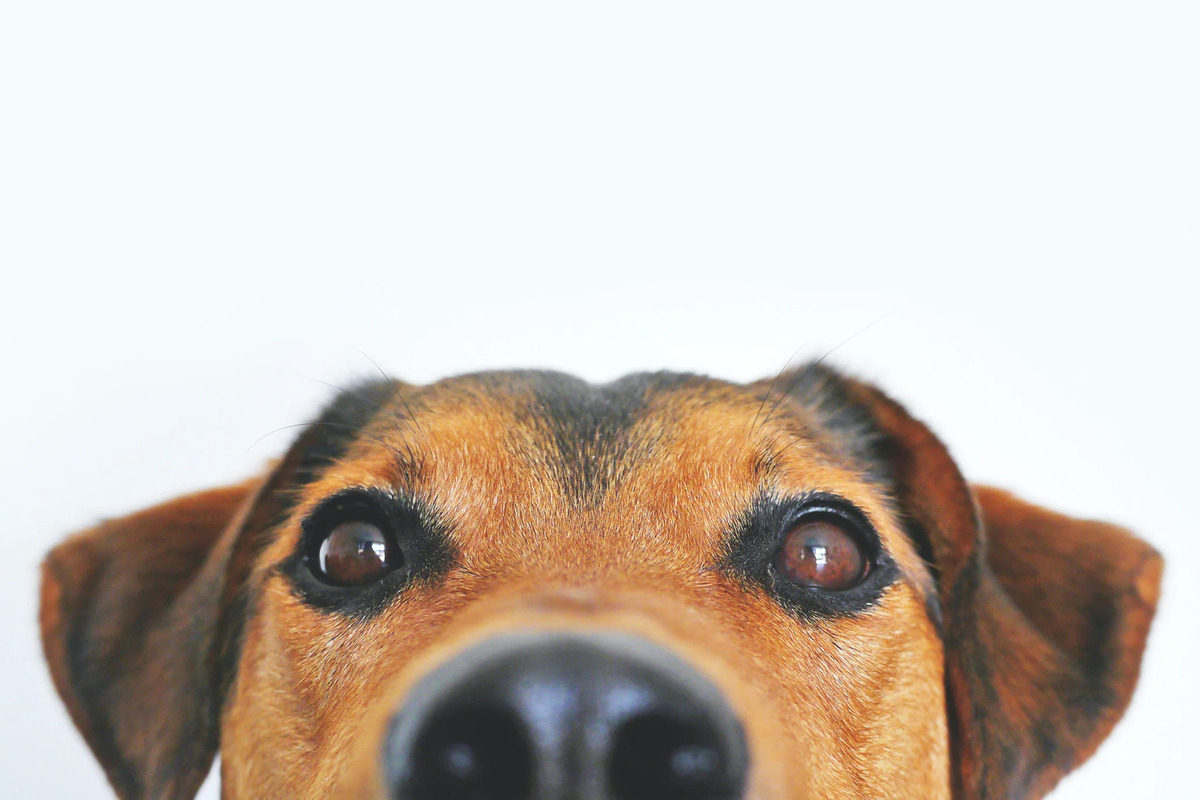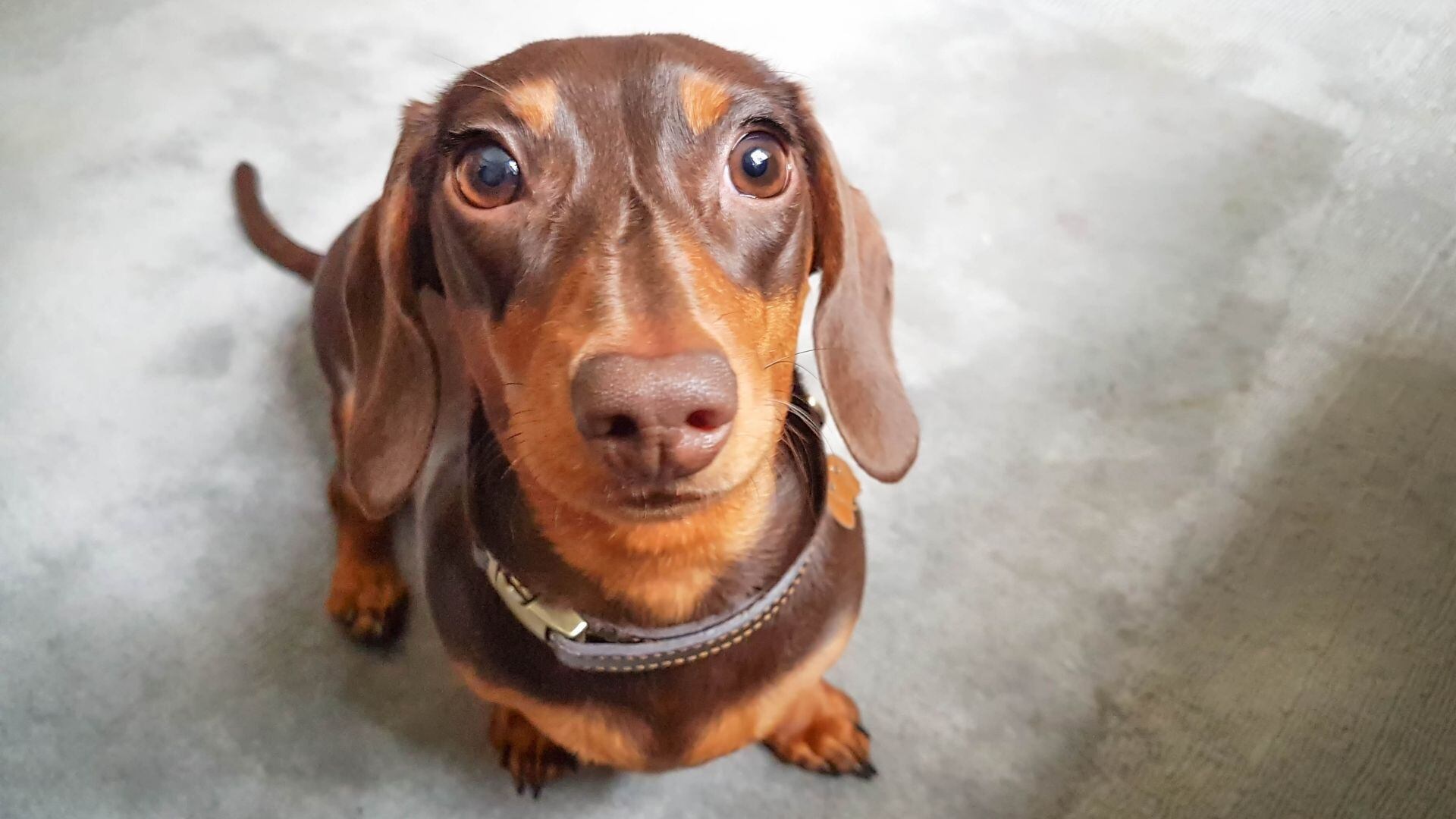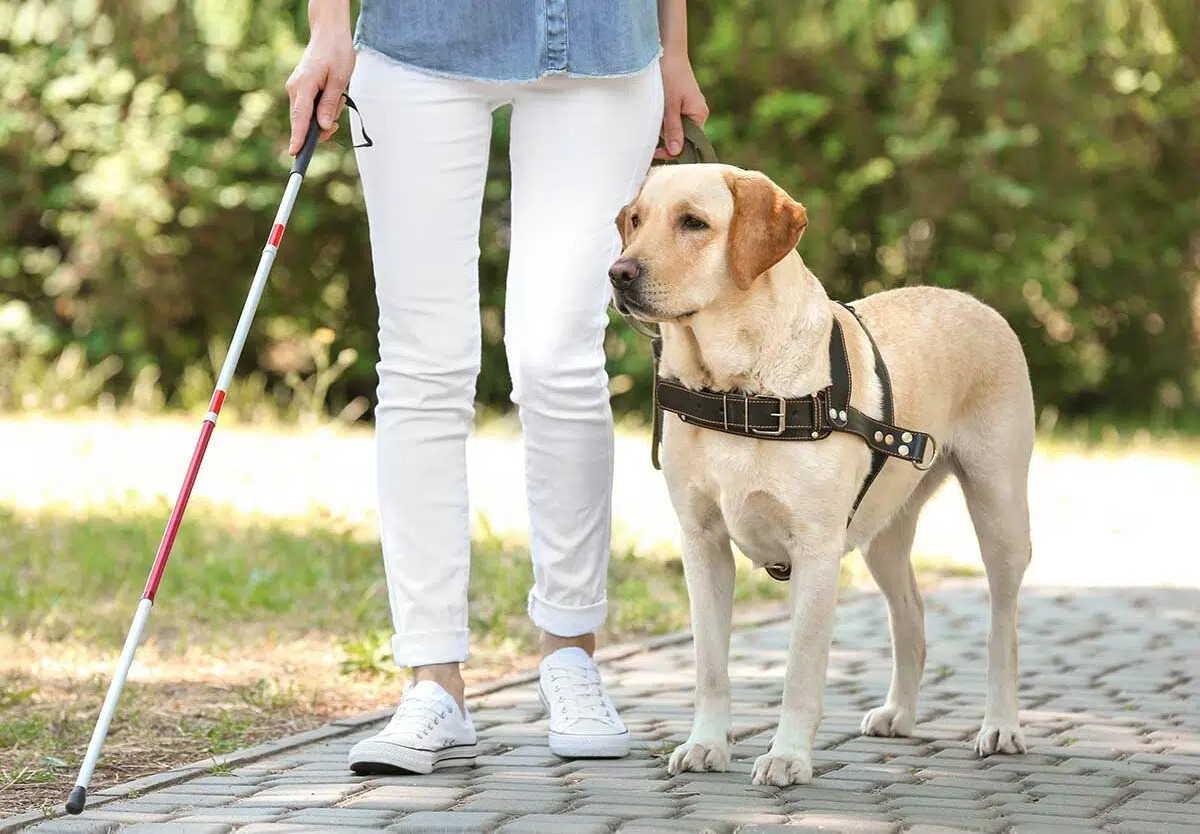Home>Health & Wellness>Common Health Issues>Eye and Ear Health>What Does It Mean When One Dog’s Eye Is Cloudy
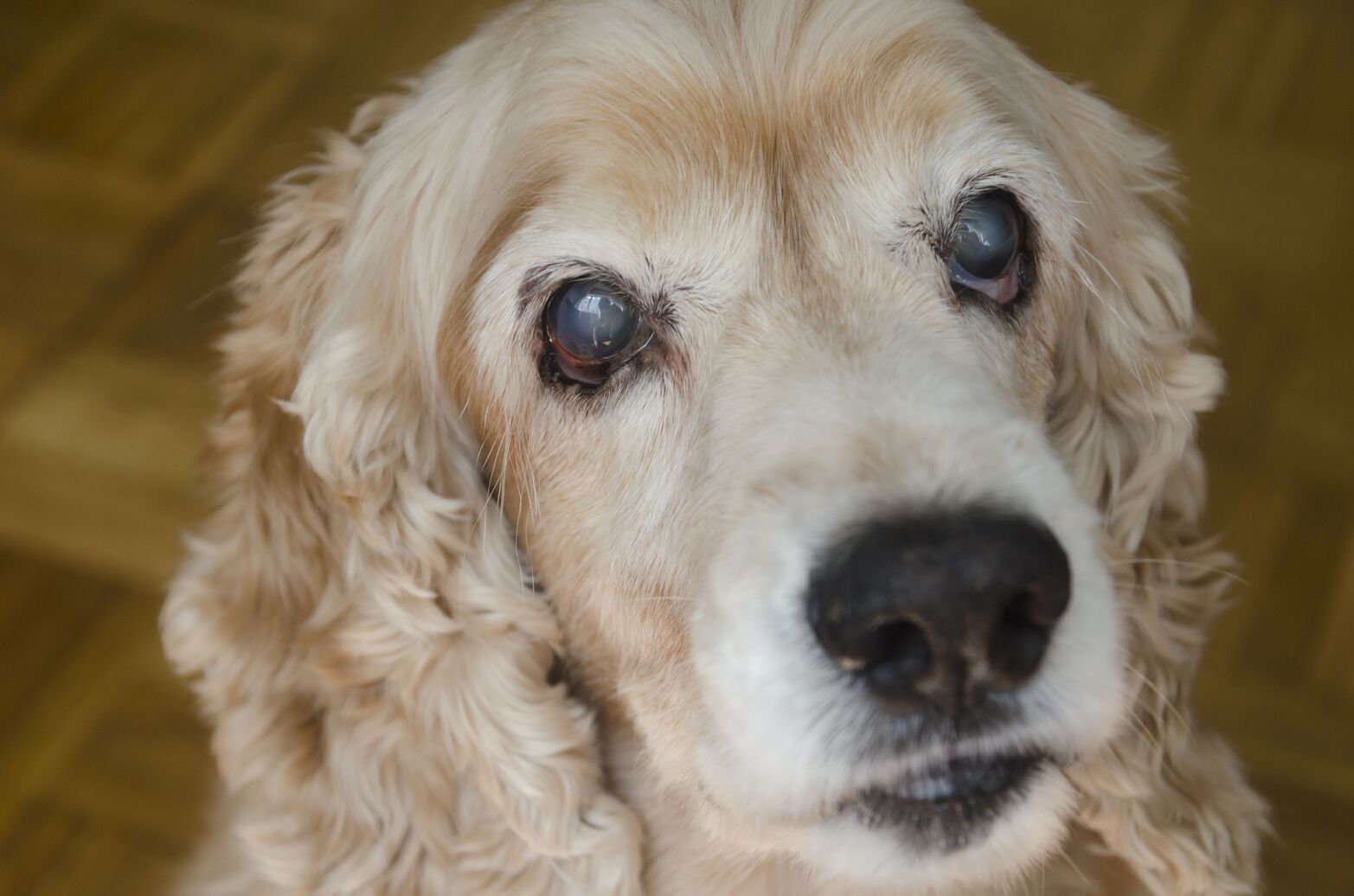

Eye and Ear Health
What Does It Mean When One Dog’s Eye Is Cloudy
Published: February 11, 2024
Learn about the causes and treatment options for cloudy eyes in dogs, and how to maintain their eye and ear health. Discover helpful tips and advice.
(Many of the links in this article redirect to a specific reviewed product. Your purchase of these products through affiliate links helps to generate commission for Pawsomeoldies.com, at no extra cost. Learn more)
Table of Contents
Introduction
When you look into your furry friend's eyes, you can often sense their emotions and feel a deep connection. However, if you notice that one of your dog's eyes appears cloudy, it can be a cause for concern. Cloudy eyes in dogs can be a sign of various underlying health issues, and understanding the potential causes, symptoms, and treatment options is crucial for ensuring your pet's well-being.
The eyes are not only the windows to the soul but also vital organs that play a significant role in your dog's overall health. Clear, bright eyes are a sign of good health, while cloudiness or opacity in the eyes may indicate an underlying problem. It's essential for pet owners to be vigilant and proactive in monitoring their dog's eye health to catch any issues early on.
In this comprehensive guide, we will delve into the common causes of cloudy eyes in dogs, the symptoms to look out for, when to seek veterinary care, treatment options, and preventive measures. By gaining a deeper understanding of these aspects, you will be better equipped to recognize potential issues with your dog's eyes and take the necessary steps to ensure their ocular health.
Let's embark on this enlightening journey to unravel the mysteries of cloudy eyes in dogs and gain valuable insights into safeguarding the precious gift of sight for our beloved canine companions.
Common Causes of Cloudy Eyes in Dogs
Cloudy eyes in dogs can be attributed to various underlying factors, ranging from minor irritations to severe health conditions. Understanding the common causes of cloudy eyes is essential for pet owners to recognize potential issues and seek appropriate care for their furry companions.
-
Cataracts: One of the primary causes of cloudy eyes in dogs is the development of cataracts. This condition involves the clouding of the eye's lens, leading to impaired vision. Cataracts can be hereditary or result from aging, diabetes, or eye trauma.
-
Corneal Dystrophy: Certain dog breeds are predisposed to corneal dystrophy, a condition characterized by the accumulation of lipid or cholesterol deposits in the cornea. This can result in a cloudy appearance of the eye and may affect vision.
-
Keratitis: Inflammation of the cornea, known as keratitis, can lead to cloudy eyes in dogs. This condition may be caused by infections, injuries, or underlying health issues, and it often manifests as redness, discharge, and sensitivity to light.
-
Glaucoma: Dogs can also suffer from glaucoma, a condition characterized by increased pressure within the eye. This elevated pressure can lead to cloudiness, pain, and potential vision loss if left untreated.
-
Uveitis: Uveitis, or inflammation of the uvea, can cause cloudy eyes in dogs. This condition may be associated with infections, autoimmune diseases, or trauma, and it often presents with symptoms such as redness, squinting, and excessive tearing.
-
Injuries and Infections: Trauma to the eye or untreated infections can result in cloudiness and discomfort for dogs. Foreign objects, scratches, or untreated bacterial or viral infections can all contribute to the development of cloudy eyes.
-
Genetic Predispositions: Certain dog breeds are genetically predisposed to eye conditions that can lead to cloudy eyes. For example, Poodles are prone to progressive retinal atrophy, which can cause cloudiness and eventual blindness.
Understanding these common causes of cloudy eyes in dogs is crucial for pet owners to monitor their pets' ocular health closely. By recognizing the potential underlying factors, pet owners can seek timely veterinary care and interventions to address the specific cause of cloudiness and ensure the well-being of their canine companions.
Symptoms to Look Out For
Recognizing the symptoms associated with cloudy eyes in dogs is pivotal for identifying potential ocular issues and seeking timely veterinary care. While the presence of cloudiness in the eye is an obvious indicator, there are additional symptoms that pet owners should be vigilant about. These symptoms can provide valuable insights into the underlying causes of the cloudiness and the overall ocular health of their canine companions.
-
Change in Eye Color: One of the primary symptoms to look out for is a noticeable change in the color of the affected eye. Cloudiness may alter the eye's natural hue, indicating the presence of cataracts, corneal dystrophy, or other underlying conditions.
-
Squinting or Excessive Tearing: Dogs experiencing discomfort due to cloudy eyes may exhibit squinting or increased tearing. These signs suggest that the eye is irritated or experiencing heightened sensitivity, warranting further examination.
-
Rubbing or Pawing at the Eye: Persistent rubbing or pawing at the affected eye can indicate discomfort or pain. Dogs may instinctively attempt to alleviate their discomfort, drawing attention to potential issues with the affected eye.
-
Visible Redness or Inflammation: Inflammation of the eye, characterized by redness or swelling, is a common symptom associated with various ocular conditions. It is essential to monitor for any signs of inflammation, as it can indicate underlying issues such as keratitis or uveitis.
-
Changes in Behavior: Observing changes in your dog's behavior, such as reluctance to engage in activities that typically involve visual stimuli or increased sensitivity to light, can be indicative of ocular discomfort or impaired vision.
-
Cloudy or Hazy Appearance: While this may seem obvious, the presence of cloudiness or a hazy appearance in the affected eye is a key symptom to watch for. The degree of cloudiness can vary, and it is essential to monitor any changes in clarity over time.
-
Difficulty Navigating Obstacles: Dogs with impaired vision due to cloudy eyes may exhibit difficulty navigating familiar spaces or avoiding obstacles. Observing your dog's spatial awareness and response to visual cues can provide valuable insights into their ocular health.
By remaining attentive to these symptoms and promptly seeking veterinary care if any of these signs are observed, pet owners can play a proactive role in safeguarding their dog's ocular health. Early detection and intervention can significantly impact the prognosis and treatment outcomes for various eye conditions, ultimately ensuring the well-being and comfort of their beloved canine companions.
When to Seek Veterinary Care
Recognizing the appropriate timing to seek veterinary care for your dog's cloudy eyes is crucial in addressing potential ocular issues and ensuring the well-being of your furry companion. While occasional eye discharge or mild irritation may not always warrant immediate concern, certain signs and circumstances should prompt pet owners to seek professional veterinary evaluation and care.
Persistent Cloudiness and Discomfort
If your dog's eye remains consistently cloudy, accompanied by signs of discomfort such as squinting, pawing at the eye, or increased tearing, it is imperative to seek veterinary care promptly. Persistent cloudiness can indicate underlying conditions such as cataracts, corneal dystrophy, or inflammatory eye diseases that require professional assessment and intervention.
Sudden Onset of Cloudiness
The sudden onset of cloudiness in your dog's eye should never be overlooked. If you notice a rapid change in the clarity of the eye, especially if it is accompanied by redness, swelling, or discharge, it is essential to schedule a veterinary appointment without delay. Sudden cloudiness can be indicative of acute injuries, infections, or ocular trauma that necessitate immediate attention.
Changes in Behavior and Vision
Observing notable changes in your dog's behavior, particularly related to their vision and overall well-being, should prompt a proactive response. If your dog displays signs of visual impairment, reluctance to engage in activities that rely on visual cues, or difficulty navigating familiar spaces, it is crucial to consult with a veterinarian. These changes may signify underlying ocular issues that require thorough examination and management.
Signs of Pain or Discomfort
Dogs experiencing pain or discomfort associated with their cloudy eyes, such as sensitivity to light, excessive blinking, or visible signs of distress, should be evaluated by a veterinary professional. Pain-related symptoms can indicate conditions such as glaucoma, uveitis, or corneal injuries, all of which necessitate prompt diagnosis and tailored treatment to alleviate discomfort and preserve ocular health.
Preexisting Health Conditions
If your dog has preexisting health conditions such as diabetes, autoimmune disorders, or a history of ocular issues, any development of cloudy eyes should be promptly addressed by a veterinarian. Certain systemic health conditions can predispose dogs to ocular complications, and proactive veterinary care is essential in managing these potential complications effectively.
By remaining vigilant and responsive to these indicators, pet owners can prioritize their dog's ocular health and take proactive measures to address potential issues in a timely manner. Seeking veterinary care at the appropriate juncture can lead to early diagnosis, tailored treatment plans, and ultimately, the preservation of your dog's precious gift of sight.
Read more: What Does Dog Whale Eye Mean?
Treatment Options for Cloudy Eyes in Dogs
Addressing cloudy eyes in dogs necessitates a tailored approach that aligns with the underlying cause of the ocular condition. Upon seeking veterinary care and obtaining a comprehensive diagnosis, various treatment options may be recommended to manage the cloudiness and preserve the visual health of affected dogs.
Cataract Surgery
In cases where cataracts are identified as the primary cause of cloudy eyes, cataract surgery may be recommended to restore visual clarity. This surgical intervention involves the removal of the clouded lens and its replacement with an artificial intraocular lens, effectively restoring vision and alleviating the cloudiness associated with cataracts.
Medications and Eye Drops
For dogs with inflammatory conditions such as keratitis, uveitis, or glaucoma, veterinary ophthalmologists may prescribe medications and specialized eye drops to manage the underlying inflammation, alleviate discomfort, and regulate intraocular pressure. These medications may include anti-inflammatory drugs, antibiotics, or glaucoma medications tailored to the specific needs of the dog's ocular health.
Nutritional Supplements
In cases where cloudiness is attributed to age-related changes or nutritional deficiencies, veterinarians may recommend specific nutritional supplements to support ocular health. Supplements containing antioxidants, omega-3 fatty acids, and essential vitamins can aid in maintaining ocular function and mitigating the progression of certain eye conditions.
Management of Underlying Health Conditions
In instances where systemic health issues such as diabetes contribute to the development of cataracts or other ocular complications, comprehensive management of the underlying health condition is essential. This may involve close collaboration between the veterinary ophthalmologist and the primary care veterinarian to optimize the dog's overall health and minimize the impact of systemic factors on ocular health.
Supportive Care and Monitoring
Throughout the treatment process, diligent supportive care and regular monitoring play a pivotal role in ensuring the effectiveness of interventions and the overall well-being of the dog. Pet owners are often advised to adhere to prescribed medication schedules, provide a comfortable environment for their pets, and schedule follow-up appointments to assess treatment outcomes and make any necessary adjustments.
By tailoring treatment options to address the specific underlying cause of cloudy eyes in dogs, veterinary professionals can work collaboratively with pet owners to optimize ocular health and enhance the quality of life for affected canine companions. Through a combination of surgical interventions, medications, nutritional support, and comprehensive management, the cloudiness in a dog's eyes can be effectively addressed, ultimately preserving their precious gift of sight and fostering a vibrant, healthy life.
Preventing Cloudy Eyes in Dogs
Preventing cloudy eyes in dogs encompasses a proactive approach to maintaining ocular health and minimizing the risk of developing eye conditions that can lead to cloudiness and impaired vision. By implementing preventive measures and incorporating healthy practices into your dog's lifestyle, you can significantly contribute to the preservation of their visual well-being. Here are essential strategies for preventing cloudy eyes in dogs:
Regular Veterinary Check-ups
Scheduling routine veterinary examinations for your dog is fundamental in monitoring their overall health, including ocular wellness. Veterinarians can conduct comprehensive eye examinations to detect early signs of potential eye conditions, allowing for timely intervention and preventive measures.
Read more: What Does A Dog Making Eye Contact Mean
Balanced Nutrition
Providing a balanced and nutritious diet is crucial for supporting your dog's ocular health. Diets rich in essential nutrients, including vitamins A, C, and E, as well as omega-3 fatty acids, can contribute to maintaining healthy eyes and minimizing the risk of age-related ocular changes.
Eye Protection
When engaging in outdoor activities with your dog, particularly in environments with potential hazards such as dust, debris, or UV radiation, consider using protective eyewear designed for dogs. These protective goggles can shield your dog's eyes from foreign particles and harmful UV rays, reducing the risk of eye irritation and injuries.
Environmental Safety
Creating a safe and hazard-free environment for your dog is essential in preventing ocular injuries that can lead to cloudy eyes. Removing sharp objects, securing hazardous chemicals, and minimizing potential eye hazards in your dog's living spaces can significantly reduce the risk of eye trauma and related complications.
Regular Exercise and Mental Stimulation
Regular exercise and mental stimulation are vital for maintaining your dog's overall well-being, including their ocular health. Engaging in physical activities and providing mental enrichment can promote circulation, reduce the risk of obesity-related health issues, and contribute to optimal ocular function.
Avoiding Secondhand Smoke
Exposure to secondhand smoke can have detrimental effects on your dog's ocular health. Avoiding smoking in the vicinity of your dog and minimizing their exposure to secondhand smoke can help prevent ocular irritations and reduce the risk of developing eye conditions associated with smoke exposure.
Dental Care
Maintaining your dog's dental hygiene is interconnected with their overall health, including ocular wellness. Periodontal disease and oral infections can lead to systemic inflammation that may impact ocular health. Regular dental care and professional cleanings can contribute to minimizing the risk of ocular complications.
By incorporating these preventive strategies into your dog's care regimen and remaining attentive to their ocular health, you can play a proactive role in safeguarding their vision and minimizing the likelihood of developing cloudy eyes. Prioritizing preventive measures and partnering with your veterinarian in promoting ocular wellness can contribute to a vibrant and healthy life for your beloved canine companion.
Conclusion
In conclusion, the well-being of our canine companions encompasses various facets of their health, with ocular wellness playing a pivotal role in their overall quality of life. The presence of cloudy eyes in dogs can serve as a poignant indicator of underlying health issues, necessitating vigilance, proactive care, and a deep understanding of potential causes and preventive measures.
By delving into the common causes of cloudy eyes, including cataracts, corneal dystrophy, and inflammatory conditions, we gain valuable insights into the multifaceted nature of ocular health in dogs. Recognizing the symptoms associated with cloudy eyes, such as changes in eye color, squinting, and visible discomfort, empowers pet owners to remain attentive to their dog's ocular well-being and seek timely veterinary care when necessary.
Understanding when to seek veterinary care for cloudy eyes is paramount, as prompt intervention can significantly impact treatment outcomes and the preservation of a dog's vision. Whether it involves addressing persistent cloudiness, sudden onset of ocular changes, or signs of pain and discomfort, proactive veterinary evaluation is instrumental in safeguarding ocular health.
Exploring the diverse treatment options available for addressing cloudy eyes in dogs, from surgical interventions to supportive care and management of underlying health conditions, underscores the importance of tailored approaches in preserving visual clarity and alleviating ocular discomfort.
Moreover, the proactive measures outlined for preventing cloudy eyes in dogs, including regular veterinary check-ups, balanced nutrition, and environmental safety, underscore the significance of holistic care in promoting ocular wellness and minimizing the risk of ocular complications.
In essence, the journey to safeguarding the ocular health of our beloved canine companions is a multifaceted endeavor that demands attentiveness, proactive care, and a collaborative partnership with veterinary professionals. By embracing a holistic approach to ocular wellness, pet owners can contribute to the vibrant and healthy lives of their dogs, ensuring that the windows to their souls remain clear, bright, and brimming with the joy of unobstructed vision.
